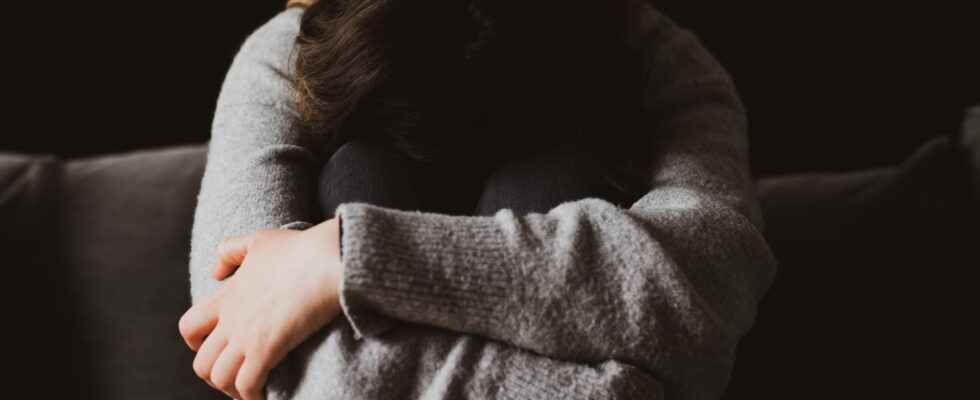Depression is a disease associated with several symptoms validated by the WHO, the HAS in France and the DSM-5, reference manual for mental disorders. Depressed mood, weight loss, envy… Here are the characteristic signs.
Depression is a common illness but not always easy to identify. How recognize true depression of one temporary depression or fatigue ? here are the definitions And symptoms of depression as established by theWorld Health Organizationthere High Authority of Health (HAS) and in the DSM-5 (Reference classification of mental disorders).
What is the WHO definition of depression?
Depression stands out “habitual mood swings and fleeting emotional reactions to everyday problems” note theWHO which are more akin to those of depression. “True” depression is marked by symptoms that set in and last. “The person with this disorder exhibits a low mood (feelings of sadness, irritability, emptiness) or loss of enjoyment or interest in activities, during most of the day, almost every day, for at least two weeks” continues the Organization. “These almost daily symptoms disrupt work and social life and cause significant distress”indicates the HAS.
The 9 Symptoms of Depression in the DSM-5
The DSM is the diagnostic and statistical reference manual for mental disorders, established by the American Psychiatric Association. In its latest version (corresponding to DSM-5), the characteristic depressive episode in adults is based on the following criteria:
A. At least 5 of the following symptoms must be present during the same 2-week period and have represented a change compared to previous operation ; at least one of the symptoms is either (1) depressed moodor (2) a loss of interest or pleasure (do not include symptoms clearly attributable to another medical condition).
- Depressed mood present almost all day, almost every day, reported by the subject (feels empty or sad or hopeless) or observed by others (cries or is on the verge of tears). Possibly irritability in children or adolescents.
- Marked decrease in pleasure for all or almost all activities practically all day, almost every day (reported by the subject or observed by others).
- Weight loss or gain significant in the absence of a diet (eg change in body weight in 1 month exceeding 5%) or decrease or increase in appetite almost every day. In the childtake into account the absence of the expected increase in weight.
- Insomnia or hypersomnia almost every day.
- Psychomotor agitation or retardation almost every day (noted by others, not limited to a subjective feeling of restlessness or inner slowing down).
- Fatigue or loss of energy almost every day.
- Feeling of worthlessness or excessive or inappropriate guilt (which may be delusional) almost every day (not just self-blame or feel guilty for being sick).
- Decreased ability to think or concentrate or almost daily indecisiveness (reported by subject or observed by others).
- Recurring thoughts of death (not just a fear of dying), recurrent suicidal ideation without a specific plan or suicide attempt or specific plan to commit suicide.
B. Symptoms induce clinically significant suffering or impairment in social, occupational, or other important areas of functioning.
C. The symptoms are not attributable to the physiological effect of a substance or other medical condition
What is the difference between depression and depression?
Many people experience shorter episodes of depression, linked to triggering factors such as the bad season, the death of a loved one or even a baby blues. But the word “depression” has entered common parlance and does not always correctly refer to depressive disorder.
For examplesadness and despondency following bereavement are not always depressive, even if they last several weeks. Similarly, fleeting feelings of melancholy and loss of enthusiasm do not necessarily constitute depression, but rather a simple phase of depression that will disappear spontaneously. THE term “depression” here refers to a transient state, indicating a normal reactivity of the individual to his life context, It is actually depression and not depression which is a real pathology because it lasts.
Sources: WHO / Annex 4. Definition of EDC according to DSM-5. HAS
